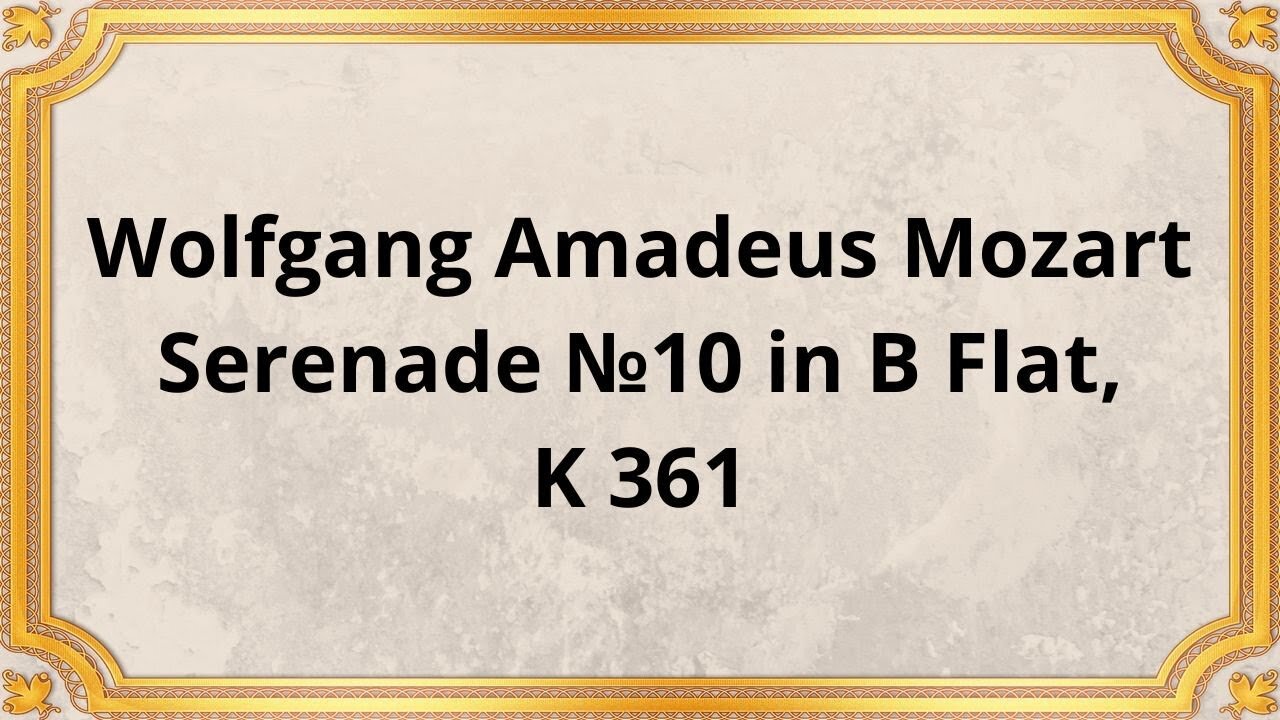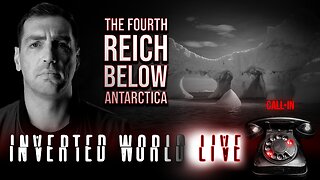Premium Only Content

Wolfgang Amadeus Mozart Serenade №10 in B Flat, K 361
#Mozart #SerenadeInBFlat #Music #Composition #Classical #18thCentury #Vienna #Musician #Composer #Orchestra #Woodwind #Brass #String #Ensemble #Melody #Harmony #Rhythm #Performance #Art #Genius #VienneseClassicalSchool #FamousComposer #MusicalGenius #HistoricalMusic #MusicHistory #MusicTheory #MusicalInfluence #Mozartian #MusicalProdigy
Edwin Fischer conducting His Chamber Orchestra
Publication date 1939
Wolfgang Amadeus Mozart, a musical genius of the Classical era, composed numerous masterpieces that continue to captivate audiences to this day. One such masterpiece is his Serenade No. 10 in B Flat, K 361.
Composed in 1781, Mozart's Serenade No. 10, also known as the "Gran Partita," was a work created during his time in Vienna. This period was marked by significant artistic and cultural development, with Mozart at the forefront, pushing boundaries and redefining classical music. The piece showcases Mozart's maturity as a composer, displaying his unparalleled ability to blend traditional forms with innovative musical techniques.
The Serenade No. 10 in B Flat, K 361 is a monumental work consisting of seven movements. Each movement showcases Mozart's exceptional craftsmanship, highlighting his command of diverse musical styles and emotions. The piece begins with a majestic and grandiose opening, followed by a series of contrasting movements, ranging from lively and playful to introspective and melancholic. The use of different instruments, including strings, woodwinds, and horns, adds depth and richness to the composition, creating a harmonious tapestry of sounds.
Noteworthy Movements:
1. Largo – Molto allegro: The first movement sets the tone for the entire serenade, with its bold and energetic melodies. Mozart expertly weaves together different musical themes, showcasing his mastery of counterpoint and orchestration.
2. Menuetto: This movement exudes elegance and grace, with its charming dance-like rhythm. The interplay between the various instruments creates a delightful musical conversation, demonstrating Mozart's ability to create nuanced and balanced compositions.
3. Adagio: The third movement slows the pace and takes the listener on a journey of introspection. It is characterized by its soul-stirring melodies and ethereal harmonies, reflecting Mozart's profound musical expression.
Mozart's Serenade No. 10 in B Flat, K 361 had a significant influence on the development of classical music. It showcased his ability to elevate the serenade genre to new heights, demonstrating the expressive potential of chamber music. The piece continues to be performed by orchestras worldwide, captivating audiences with its beauty and complexity.
Conclusion:
Wolfgang Amadeus Mozart's Serenade No. 10 in B Flat, K 361 stands as a testament to his exceptional talent and contribution to the world of classical music. With its intricate musical structure, emotional depth, and timeless appeal, this masterpiece continues to inspire and enchant audiences centuries later. As we immerse ourselves in the grandeur of this serenade, we are reminded of Mozart's genius and the enduring legacy he has left behind.
You have the opportunity to support the channel
https://www.donationalerts.com/r/radsiaral
-
 20:26
20:26
Classical music_Music Inspiration
27 days agoJohann Sebastian Bach Orchestral Suite No. 2 in B minor, BWV 1066
702 -
 LIVE
LIVE
Inverted World Live
3 hours agoThe Fourth Reich Below Antarctica | Ep. 71
342 watching -
 LIVE
LIVE
Barry Cunningham
3 hours agoPRESIDENT TRUMP IS EXECUTING ON A WHOLE DIFFERENT LEVEL! HE ALWAYS HAS!
8,470 watching -
 1:34:00
1:34:00
Nick Freitas
3 hours agoCan Elon Musk’s America Party Actually Win?
11.9K9 -
 31:35
31:35
Solar Groove Muzic
21 hours ago $0.03 earnedDeep House Mix 2025 | Deep House, Vocal House, Nu Disco, Chillout
106 -
 1:21:31
1:21:31
Glenn Greenwald
4 hours agoTrump Mocks Concerns About Epstein; Trump Continues Biden's Policy of Arming Ukraine; Trump and Lula Exchange Barbs Over Brazil | SYSTEM UPDATE #483
101K90 -
 54:26
54:26
Edge of Wonder
7 hours agoTexas Floods: Boots on the Ground with Shawn Livingston
13.2K7 -
 1:38:45
1:38:45
LIVE WITH CHRIS'WORLD
2 hours agoLIVE WITH CHRIS'WORLD - DO YOU FEEL LIED TO?
15.5K5 -
 1:06:31
1:06:31
BonginoReport
5 hours agoIs Trump Trying To Sweep Epstein Under The Rug? - Nightly Scroll w/ Hayley Caronia (Ep.85)
142K174 -
 1:19:40
1:19:40
Kim Iversen
6 hours agoDid Cloud Seeding Cause The Texas Floods?
114K91